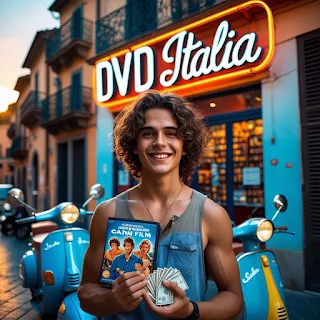How Indie Films Are Quietly Shaping Global Entertainment
In a world where Hollywood blockbusters dominate headlines and box offices, a
quieter revolution is unfolding behind the scenes—independent films are
steadily influencing global cinema and mainstream entertainment.
By June 2010, the growth of indie cinema is no longer a fringe phenomenon.
Around the world, audiences are discovering the power of small-scale
storytelling, driven not by spectacle or special effects, but by raw emotion,
authenticity, and artistic vision.
What Makes a Film “Indie”?
Independent films are produced outside major studio systems and usually operate
on modest budgets. But don’t mistake minimal funding for minimal impact—indie
films have become a haven for creativity, allowing directors and writers to
take risks rarely afforded in commercial productions.
Indie cinema thrives on emotional depth, cultural specificity, and experimental
narratives. These films often tackle themes that are overlooked or too
controversial for traditional studios: social inequality, personal identity,
mental health, or immigration. For many audiences, indie films offer an escape
from the formulaic and a return to the human.
The Power of Story Over Spectacle
What sets indie films apart is their commitment to story. While big-budget
films may rely on visual effects or celebrity casting, indie filmmakers are
known for focusing on character, mood, and message. It’s about depth, not
dazzle.
Films like The Hurt Locker (2008), which earned both acclaim and Oscars,
demonstrate that small films can have massive influence. Its tense realism and
gritty cinematography changed how war stories are told—and reminded the world
that a small voice can echo loudly.
Film Festivals: The Global Stage for Indies
Events like the Sundance Film Festival, Berlin International Film Festival,
Cannes Directors’ Fortnight, and Toronto International Film Festival (TIFF)
have become launching pads for indie films and unknown talent. For many
filmmakers, these festivals offer the only path to international visibility.
In 2010, these festivals are packed with films that challenge norms, embrace
new cultures, and elevate unique voices. Notably, many winning films go on to
secure theatrical releases or DVD distribution—sometimes even critical acclaim
at the Oscars.
DVD Rentals and Emerging Streaming Services
While streaming hasn’t yet taken over the world in 2010, DVD-by-mail services
like Netflix are starting to shift how indie films are discovered. In the U.S.,
Netflix’s growing library includes hidden gems and international indies that
may never have hit local theaters.
Globally, platforms like MUBI are experimenting with curated online film
experiences—offering daily film recommendations and hosting indie titles that
wouldn’t be seen otherwise. Though still in its infancy, this digital shift is
making it easier for global audiences to find non-mainstream cinema.
Indie Directors Influencing the Mainstream
Some of today’s most celebrated filmmakers began their careers in indie cinema.
Directors like Darren Aronofsky (Pi, Requiem for a Dream) and Wes Anderson
(Rushmore, The Royal Tenenbaums) have brought indie aesthetics—quirky
characters, rich color palettes, and unusual narratives—into the mainstream
spotlight.
Their success has prompted major studios to hire indie-minded directors for
commercial projects, seeking that authentic, character-driven style that
resonates with modern viewers.
A Global Voice Emerging
Independent filmmaking is not limited to the U.S. or Europe. Countries like
Iran, Brazil, South Korea, and India are producing indie films that win top
prizes internationally. Films like The White Ribbon (Germany/Austria), Ajami
(Israel), and Mother (South Korea) are examples of how indie cinema can
transcend borders and language.
Audiences are increasingly open to subtitles and foreign
storytelling—especially when it feels more real and less manufactured.
Audiences Want More Than Escapism
The popularity of indie films reflects a shift in audience values. Viewers
aren’t just looking for fantasy or comedy—they’re seeking connection,
representation, and truth. Indie films offer stories that mirror our lives, not
just our dreams.
Even younger generations, typically drawn to action and animation, are
discovering the depth and emotion that indie dramas and documentaries can
deliver. Websites, blogs, and early YouTube reviewers are also helping spread
awareness of “under-the-radar” films.
Challenges Remain, But the Future Looks Bright
Despite growing visibility, indie filmmakers still face funding difficulties,
limited distribution, and tight marketing budgets. Most rely on grants, small
investors, or crowdfunding (a trend just beginning to emerge). But the rise of
social media, blogs, and peer recommendations is beginning to level the playing
field.
Word-of-mouth and festival buzz are more powerful than ever, helping indie
films reach beyond their borders and connect with niche audiences worldwide.
Final Thoughts
At ArtBeatWire, we celebrate creative voices that take risks and rewrite rules.
Indie films may not always break box office records, but they break ground—and
that matters.
They show us what’s possible when art is prioritized over profit, when vision
is stronger than branding, and when stories are told not to please everyone,
but to reach someone deeply.
As more platforms emerge and audiences continue to seek genuine storytelling,
independent films will remain a guiding light in global entertainment—quietly,
but powerfully, shaping the future of cinema.
